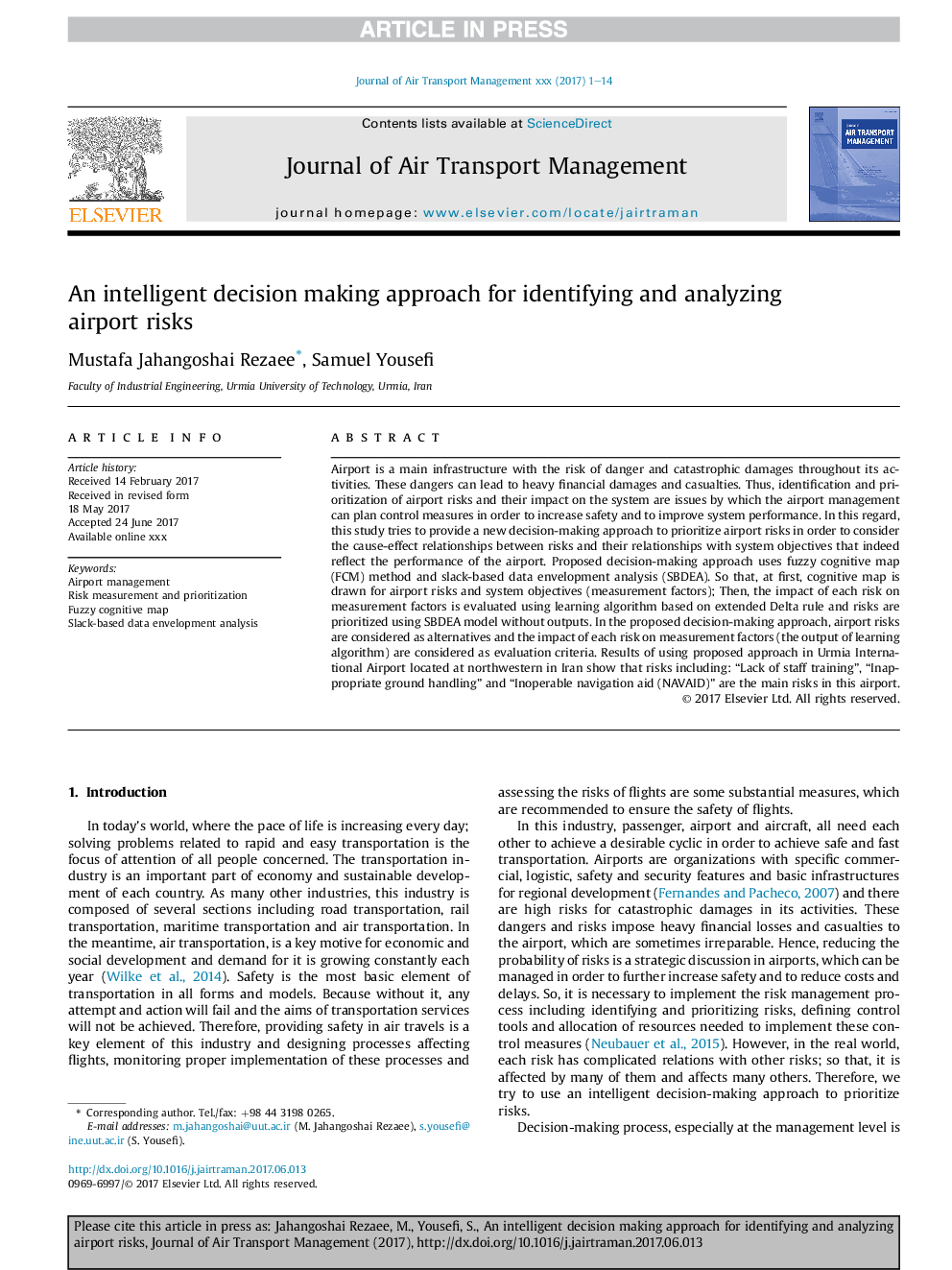| Article ID | Journal | Published Year | Pages | File Type |
|---|---|---|---|---|
| 7435164 | Journal of Air Transport Management | 2018 | 14 Pages |
Abstract
Airport is a main infrastructure with the risk of danger and catastrophic damages throughout its activities. These dangers can lead to heavy financial damages and casualties. Thus, identification and prioritization of airport risks and their impact on the system are issues by which the airport management can plan control measures in order to increase safety and to improve system performance. In this regard, this study tries to provide a new decision-making approach to prioritize airport risks in order to consider the cause-effect relationships between risks and their relationships with system objectives that indeed reflect the performance of the airport. Proposed decision-making approach uses fuzzy cognitive map (FCM) method and slack-based data envelopment analysis (SBDEA). So that, at first, cognitive map is drawn for airport risks and system objectives (measurement factors); Then, the impact of each risk on measurement factors is evaluated using learning algorithm based on extended Delta rule and risks are prioritized using SBDEA model without outputs. In the proposed decision-making approach, airport risks are considered as alternatives and the impact of each risk on measurement factors (the output of learning algorithm) are considered as evaluation criteria. Results of using proposed approach in Urmia International Airport located at northwestern in Iran show that risks including: “Lack of staff training”, “Inappropriate ground handling” and “Inoperable navigation aid (NAVAID)” are the main risks in this airport.
Related Topics
Social Sciences and Humanities
Business, Management and Accounting
Strategy and Management
Authors
Mustafa Jahangoshai Rezaee, Samuel Yousefi,
